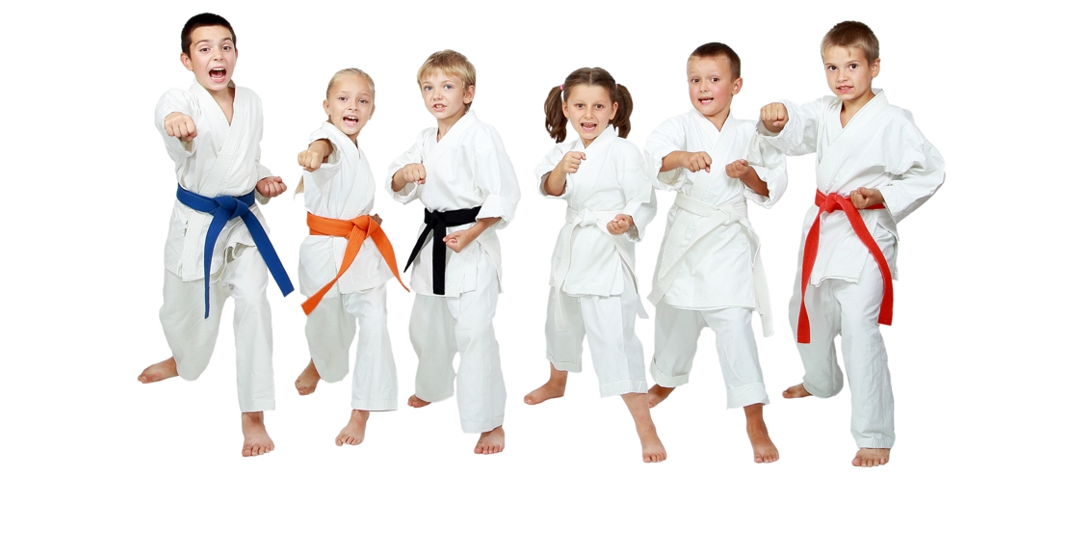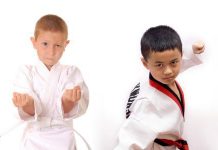Introduction
At the surface, martial arts training is very attractive to both parents and children alike for many different reasons. With so much time and money being spent on this training, one would hope there is discernible long-term benefit to this training. As in all things in life, reality does not always bear the fruit of the ideal sold to you at the door of the martial arts school. In this article, I am liberally generalizing the overall landscape of children’s martial arts instruction. While I do believe that most martial arts schools and programs for children are utterly ineffective to the point of being a waste of time and money for parents and children, there are many schools that are fabulous and add value to the lives of all involved. This article should help you know what to look for and what to avoid. Ultimately, it should help you make your own mind up when you seek instruction for your own child. Each of us have different goals and a different moral baseline to judge what is right for our children.
Know What You Want, Know What They Want
Parental Goals
Parents who seek martial arts training for their children do so for a number of reasons. Some are clearly aimed at benefit for their children, others are merely convenient by-products of training. Some are good reasons, some perhaps are not:
- Structured social interaction
- Physical fitness
- Self defense
- Getting the child out of the house for a while
- Learning to respect adults
- Because the child is begging the parent for classes (for any number of reasons, but usually because a friend is participating)
- Because the child is showing some agility that indicates a possible affinity in martial arts.
Before you decide where your child should train in martial arts, know what it is you and your child want to get from it, whatever it is.
What Schools Want
Most martial arts schools that have children’s programs are doing what is obvious at face value: they are trying to extend their membership and increase revenue. This is painfully obvious in some schools where, regardless of the child’s abilities, there is a scheduled handing out of colored belts and tournaments every month. Each is designed to dole out a carrot to the child and put a smile on his/her face long enough for you to write another check for the next month.
There are a handful of schools out there that have much higher values than this. I have personally met the instructors from these schools and can say there is hope out there! These schools have higher goals such as bringing together people from all walks of life throughout the community with a shared passion, sharing and expanding knowledge in a given art, and bringing family and friends together.
Your Child’s Goals
What Children Want
Kids want to hang out with children of their own age and gender and do just about anything that is not related to housework. This is easy. So, perhaps a better heading for this section is…
What Children Need Children need to learn 2 very important things:
- Almost no conflict should be solved with physical aggression.
- For those limited conflicts that require physical aggression, only disciplined training in an effective self defense system is going to be worth the time invested by the children.
Realities of Martial Arts Instruction
Focus on Fighting rather than Not Fighting – Given a situation of conflict, many children trained in martial arts find it easier to fight than not to fight. This is clearly an inappropriate reflexive reaction that indicates a lack of proper focus in the training curriculum. While it is very useful to know how to defend yourself, it is unfortunate that most martial arts do not attempt to prevent these situations. In most situations, a child can simply walk away from a conflict without fighting. Without training how to do this, this is very difficult. Children need to be taught that words should never be the cause of a fight. Only situations where harm is imminent to the child or to a loved one of the child (whether this includes “best friends” is largely up to the moral compass of the parent). There practically no schools that teach the legal and moral ramifications of fighting and harming another person in any but situations of utmost necessity. In 17 years of martial arts training, I have only had an opportunity to go to one such seminar. I found it refreshing and extremely useful.
Ineffective – The sad reality of martial arts is that most martial arts are largely ineffective systems which teach people how to move in a very specific way geared toward defending a very limited set or type of situations. Martial arts schools generally do not teach you to defend yourself in realistic situations or, more importantly, how to avoid solving conflict with physical aggression.
Attrition – Regardless of the after school or summer activity you get your children involved in (horseback riding, piano, swimming, soccer), your greatest hurdle is finding something your child has an affinity for. Nowhere is this more true than in martial arts training. Even doing all your research, you cannot predict what your child will truly enjoy. Equally importantly, you can do little to predict what benefit you will see in your child after training. It may be your decision to pull the child from training (to go to a better school, or to move on to another activity altogether). One in 10 kids will last a year in martial arts. One in 20 will last long enough to get lasting value from it. As a result, don’t set your expectations too high. Most folks aren’t suited to martial arts training. Make sure your child gives it a good try before making his/her mind up (at least 2 months), but don’t be surprised if they become a statistic of attrition.
The Hollywood Challenge – The flashiest martial arts are almost universally the most useless. Kids see a “flying side kick” or hear about something called an “iron butterfly kick” and you can be sure they want to learn this first. We are all attracted to the fantastic. Keep in mind the root of “fantastic” is the same as “fantasy.” Relying on techniques that require defying gravity is a fantasy. As are most things in Hollywood, these techniques are merely a facade and do not represent any substance worth your time or money. In fact, in realistic self-defense and combat situations, these techniques are never even taught. But kids don’t always care about what works in reality. My son is more interested in the damage power of a Pokemon monster than he is an effective hook punch. How do you counteract this? Find a training program that can defend against and readily neutralize these absurd attacks. After all, if 75% of kids who train in martial arts are studying Tae Kwon Do (one martial art that will teach your kids these inefficient or ineffective techniques), your children will need to be able to spot and defend against these attacks. Luckily, this is quite easy!
Research: Looking for The Right Stuff
Finding a School that is Right for Your Children (and the Parent)
- Decide on a set of parental goals.
- Discuss what it is your child wants to get. Understand their goals.
- Decide on your criteria for the right school. What is most important? Strike a balance.
- Shop around! Do your research. Talk to a number of experts, but make your own decision. By expert, I mean someone who has trained in multiple systems over a number of years. Ask questions of your prospective schools.
Strike a Balance
As in most things in life, the best things are rarely free and are rarely conveniently located. This does not mean you need to drive 20 miles and spend a ton of money on martial arts classes for your child. In fact, if you believe the statistics of attrition, it would be a waste of your time to over-commit yourself or your child before you know if your child has an affinity for martial arts. Do your research, but know when to strike a balance between the various factors in your life (time, money, commitment).
Questions to Ask a Prospective School
- What is your core focus?
- What does your curriculum consist of? In many schools, historical information, etiquette, and terminology are just as important as physical training. Be wary of board breaking training. This is where students are expected to strike boards and break them in order to advance. Many traditional and contemporary Asian striking systems rely on demonstration of power through breaking wooden boards. This is a trick and had absolutely nothing to do with a good punch. Ask professional boxers how much board breaking has helped them get where they are. Board breaking is irrelevant. I was breaking boards as a yellow belt in Karate in 1985. Trust me, I didn’t know a thing about self defense and those boards were falling apart. It proved nothing.
- What is the basis for your self defense system? The answer you are looking for is some historical breakdown of what systems of self defense have lead to this one. Many martial arts are derived from one or more foundation systems. If you don’t understand what they are, ask follow-up questions. Simply knowing that your child studies a derivative of Okinawan Karate and Japanese Judo is meaningless if you don’t understand more.
- Are weapons involved? If so, is the child learning to defend against weapons (an attacker has a weapon) or in offensive situations? I make no judgment here, but you should know ahead of time what they are and their intended use.
- Do you have contracts? The same way a health club or cellular phone service provider will get you to think that you are saving money by signing up for a long term commitment, so too will many martial arts schools. This is geared toward earning them more money, not saving you money. Again, the concept of attrition applies here, and in this case it can lead to a stressful situation for you and your child. Most children will not last long in martial arts class. A parent’s investment in a contractual obligation often blinds them to the needs of their children: “you’ll go to this class because we’ve prepaid for three months!” Don’t put yourself in this situation if you can avoid it.
- What are the fees? Inquire about equipment costs, examination fees, private lesson costs, tournament expenses, and late fees.
- Who does the teaching? Often times you will meet with a high ranking instructor only to find that you are being instructed by a student teacher. Student teachers are fine, but you should not be tricked by a bait and switch tactic. I was a student teacher for years in a children’s karate program. How are student teachers trained to teach children? Usually they are not. They just go through the same drills that an adult goes through. This is clearly not appropriate since children often have not been taught the basic life skills that are needed to avoid fighting.
- Can I watch your classes and examinations? If you are not allowed to, walk away. If you are allowed to, you should watch at least 2 classes before deciding to join. In one class you should sit alone without your child to distract you. In the next one, let your child watch with you. When you do watch a class, here are things you should look for.
- What are your rules on sparring? When do you let children start sparring? Sparring is a controlled fighting situation that happens in training and competition. A very common mistake made by schools is letting children spar before they have the fundamentals required to control themselves so they don’t hurt themselves or their opponent. Another mistake is letting children spar unsupervised. For children and adults alike, only those with intermediate to advanced skill level should spar unsupervised.
- What is the mix of classes? Does the school cater to children only, or are there men’s and women’s classes. This is important if you think you’d like to have your child “grow up” in the art. What is the enrollment? If there are hundreds of children and only a handful of adults, you are probably dealing with a glorified daycare center, not a martial arts school.
Watching a Class: What to look for, and what to not worry about
- Most martial arts are systems of body movement designed for self defense. Do the students practicing this art move in a way you would like to move? Do they move in a way you think it is possible for you to move knowing your limitations.
- Are the intermediate and advanced students generally in the kind of physical shape you’d like to be in?
- Is there a good balance between advanced, intermediate, and beginner students? Having an imbalance of any of these groups usually points to underlying problems at the school. For example, lots of beginners and few advanced students indicates there is a big attrition problem. Why aren’t the students sticking around? On the other hand, there may be an advanced class where they train. If so, go watch it as well. Having too many advanced students and few beginners indicates a school that has stopped growing. This creates a stale atmosphere where new ideas or tough questions may not be welcome.
- What does the spirit of the school feel like? Are the students helpful and friendly with each other? Is there a balance between nurturing and competitive spirits? Do any students or instructors approach you automatically? Do they look forward to helping you? In the boot camp environment of some schools, you may see your children getting yelled at or forced to do pushups to control discipline. Make sure you know what you want for your child.
- Don’t judge a book by its cover. While I have been to many great schools that focus on cleanliness and order, I have also been to many great schools that thrive in dust. If it bothers you, that’s fine, but don’t think it has anything to do with the quality of instruction. The Japanese are excruciatingly concerned with order and cleanliness, so you can use this as a benchmark of a traditional Japanese dojo, but not for any other schools.
- Trophies and other chestpuffery. School pride in the form of pictures and trophies are fine, but if you are shopping schools, don’t make the mistake of picking the place with the most trophies, unless:
- You are interested in competition
- The trophies are relatively current (within the past 18 months)
- The winners and instructors of the winners are still at the school
- The trophies were not simply won at closed school events (as are many large system tournaments such as those held in Taekwon Do dojang).
Preparing your Child for Training
- Patience and commitment. Martial arts are at their core systems of movement. Like a child who has never swam before, they may not be prepared for the learning curve of a new system of movement. It could be a couple of months before they start to learn how to tread water in this new system.
- It’s harder than it looks. A shark makes swimming look easy. If the child has seen movies and watched demonstrations of highly skilled people, they may be disappointed to learn how tough it is to get even basic moves right. This is clearly a valuable life lesson for your child. Getting good takes hard work and practice.
- Losing hurts. Go to any children’s wrestling competition and you will see the remarkable consistency of kids crying when they lose. This might seem alarming to parents, but think about what is going on for a second. These kids are trying their hardest to win. When they lose despite their greatest efforts, it is very frustrating for them. This combined with physical exhaustion often leads to tears. I have tried a number of times to talk my kids out of crying when they lose: “You did your best!” “You looked great out there!” “That kid is way bigger than you!” “You’ll get him next time!”, etc. Ultimately, I decided to give up talking them out of crying and let them have their tears. Give them a hug and get them back on the mats as quickly as they can stand it. Crying is natural. They will grow out of it when they realize on their own that losing is a great way to learn, even if it hurts a little at the time.
Martial Arts and the Risk of Injury
These are martial arts we are talking about. By putting your child into training, you realize you are putting your child in some degree of danger for injury. The waiver doesn’t need to tell you that. For me, the toughest part of this is watching my kids struggle when I know they are about to be defeated. It’s not losing that bothers me. I get a little worried that the choke my little boy is desperately blocking is going to knock him out before he can realize he has lost and can “tap out.” Getting knocked out by something like a choke (or a kick for that matter) is a spooky prospect. I’ve been knocked out before. It is no fun and scares the heck out of anyone in the vicinity because to an untrained eye, an unconscious person looks dead, even if for only a second. You get the picture. You need to decide if you have the stomach for this. The potential gains in martial arts training are enormous, but there are risks.
A Recommendation on Training: Austin Jiu-Jitsu
Austin Jiu Jitsu. This is a system I am actively using for children’s martial arts instruction. It is based on a number of different martial arts. There is heavy influence from Brazilian Jiu Jitsu. There are techniques from Judo, Aikido, and Thai Boxing as well. I designed it for my kids and have used it successfully since early 2003 so you can be assured a very picky person has approved this course material: me! 🙂
Copyright © 2003 by David Thomas






